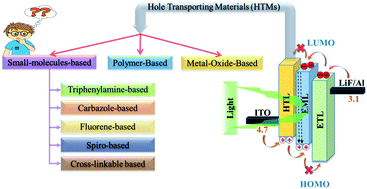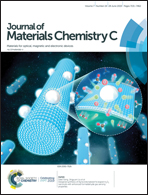Hole-transporting materials for organic light-emitting diodes: an overview
Abstract
Organic light-emitting diodes (OLEDs) unfurl mainstream lighting and display technology in consumer electronics. Over the last three decades, numerous approaches to material synthesis and device design have been implemented for improving OLED performance. For the constant demand for high-efficiency and long-lifetime OLEDs, the development of high-performance organic electroluminescence materials is of prime concern. Encouragingly, great progress had been made in the area of organic electroluminescence materials in recent years. The design and synthesis of a novel series of hole-transporting, electron-transporting, host and emitter materials have enabled OLEDs with remarkable operating characteristics. Hence, in this article, we reviewed the crucial material tactics employed to obtain high-performance OLED devices with small molecules, carbazole, fluorine, cross-linked, and metal oxide-based hole transport materials. The general properties of the charge carrier mobility, thermal stability, and structural configuration of hole transport materials are shown, and their significant effects on devices are discussed to understand device physics and improve the future performance and reliability of OLEDs. Moreover, the future perspectives and ongoing challenges of this research frontier are also highlighted.

- This article is part of the themed collection: Recent Review Articles


 Please wait while we load your content...
Please wait while we load your content...